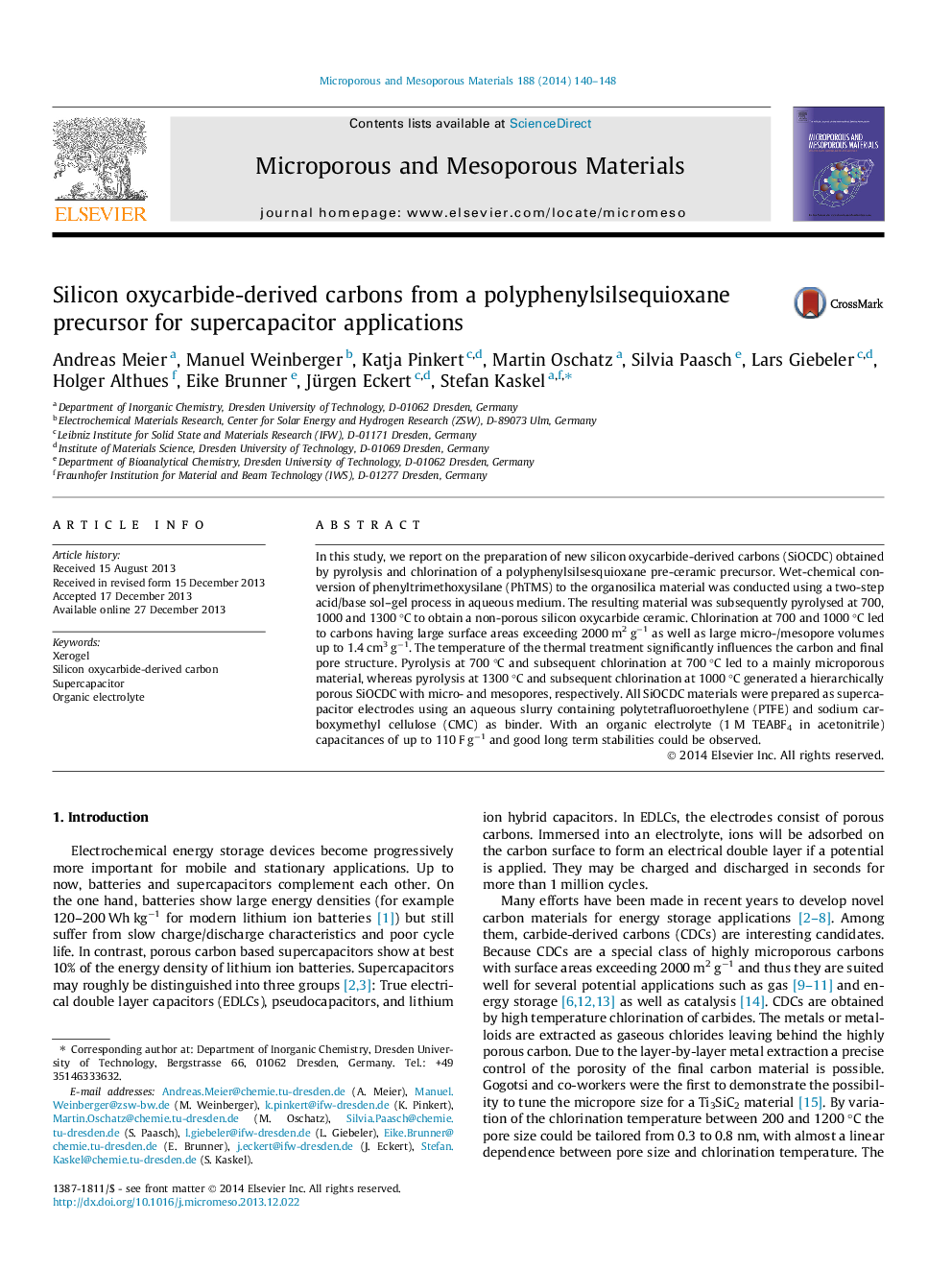| Article ID | Journal | Published Year | Pages | File Type |
|---|---|---|---|---|
| 73191 | Microporous and Mesoporous Materials | 2014 | 9 Pages |
•Porous carbons were prepared by chlorination of silicon oxycarbides.•Electronic and pore structure of carbon was controlled via synthesis temperature.•EDLC electrodes were prepared with aqueous slurry and doctor blade technique.•Resulting electrodes show high power and energy density.
In this study, we report on the preparation of new silicon oxycarbide-derived carbons (SiOCDC) obtained by pyrolysis and chlorination of a polyphenylsilsesquioxane pre-ceramic precursor. Wet-chemical conversion of phenyltrimethoxysilane (PhTMS) to the organosilica material was conducted using a two-step acid/base sol–gel process in aqueous medium. The resulting material was subsequently pyrolysed at 700, 1000 and 1300 °C to obtain a non-porous silicon oxycarbide ceramic. Chlorination at 700 and 1000 °C led to carbons having large surface areas exceeding 2000 m2 g−1 as well as large micro-/mesopore volumes up to 1.4 cm3 g−1. The temperature of the thermal treatment significantly influences the carbon and final pore structure. Pyrolysis at 700 °C and subsequent chlorination at 700 °C led to a mainly microporous material, whereas pyrolysis at 1300 °C and subsequent chlorination at 1000 °C generated a hierarchically porous SiOCDC with micro- and mesopores, respectively. All SiOCDC materials were prepared as supercapacitor electrodes using an aqueous slurry containing polytetrafluoroethylene (PTFE) and sodium carboxymethyl cellulose (CMC) as binder. With an organic electrolyte (1 M TEABF4 in acetonitrile) capacitances of up to 110 F g−1 and good long term stabilities could be observed.
Graphical abstractFigure optionsDownload full-size imageDownload as PowerPoint slide
